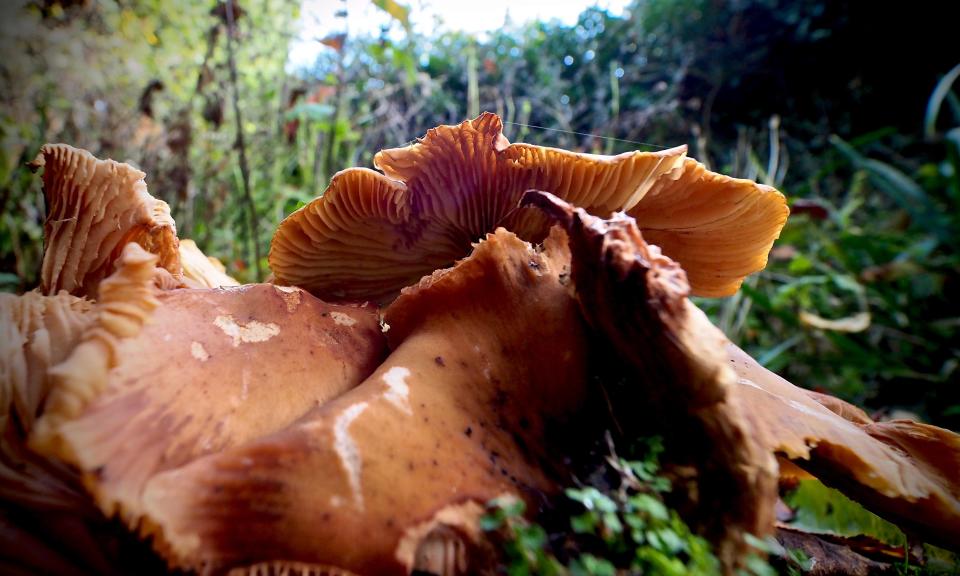Country diary: The slow poisoner of trees has risen from the soil

Wenlock Edge, Shropshire: By the time the honey fungus mushroom returns underground, its work will be done
From underground, the flanged, fluted flaps of new honey fungus mushrooms haul themselves into the light. The older ones are slick with a strange grease, mottling and sagging towards decay from the first golden moment of their appearance.
The mushrooms have surfaced to breathe their spores into the air. Their sexual reproduction is mysterious, and geographic populations of the honey fungus Armillaria mellea in the world’s temperate woods may become separate species. This one has probably been here long before there was a garden, a medieval burgess plot, a Saxon or Brythonic farm. For centuries, the honey fungus has been spreading through the soil between the trees that it has killed through rhizomatic “bootlaces”. These bootlaces are like fibre optic cables that attach to the tree roots and produce toxins and mechanical pressure, penetrating the cell walls and flooding them with sheets of white gauzy mycelium: the honeyed voice of rot.
From these mushrooms, a root leads back to a Japanese cherry tree, Prunus ‘Kanzan’. A couple of evenings ago, from an unlit office five storeys above Oxford Road in Manchester, I looked down into the little park below to see a golden tree in a golden pool of its own fallen leaves, glowing in the background radiation of the city. Those leaves were momentarily mythic, full of summer, light years falling to decay in space.
Suppose the golden bough – the magical branch of golden leaves guarded by a cult of forest kings, given by the Trojan hero Aeneas to Prosperina, goddess of life, death and rebirth, for safe passage into the underworld – has become this fungus Armillaria? It emerges from the land of the dead; it will kill this Kanzan cherry over the next few years, the tree’s spectacular flowering in spring an omen for its demise. It killed its predecessors whose decay feeds the soil to grow new life; it will kill future trees too.
The honey fungus mushrooms corrupt to a slimy mass to withdraw underground. The last leaves of the tree, holding the last November light, will fall in tonight’s frost.
• Country Diary is on Twitter at @gdncountrydiary

 Yahoo News
Yahoo News 